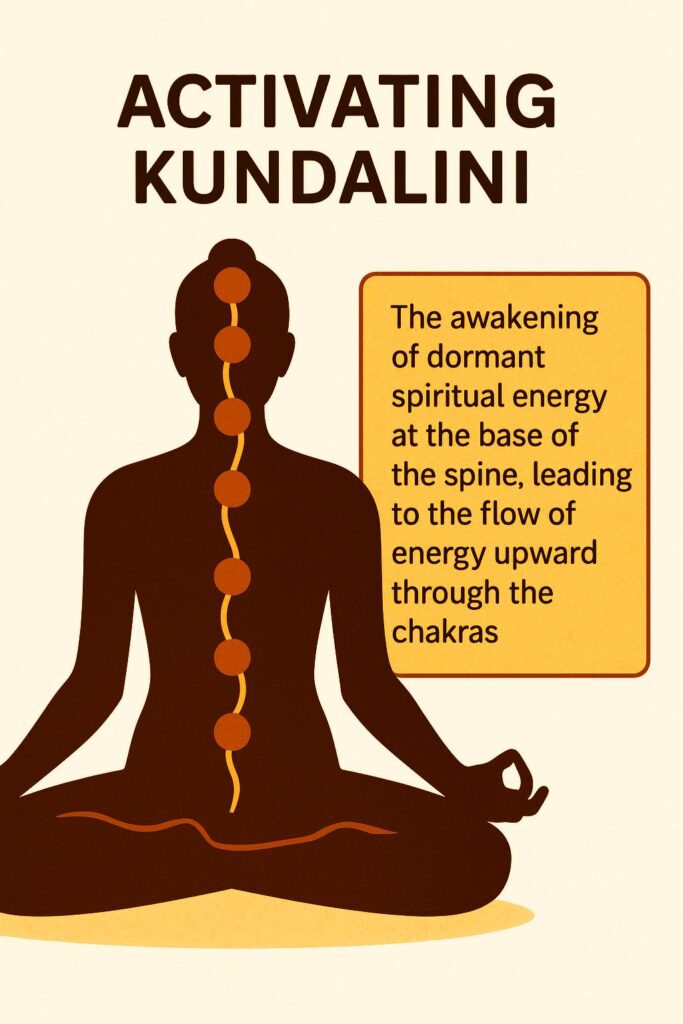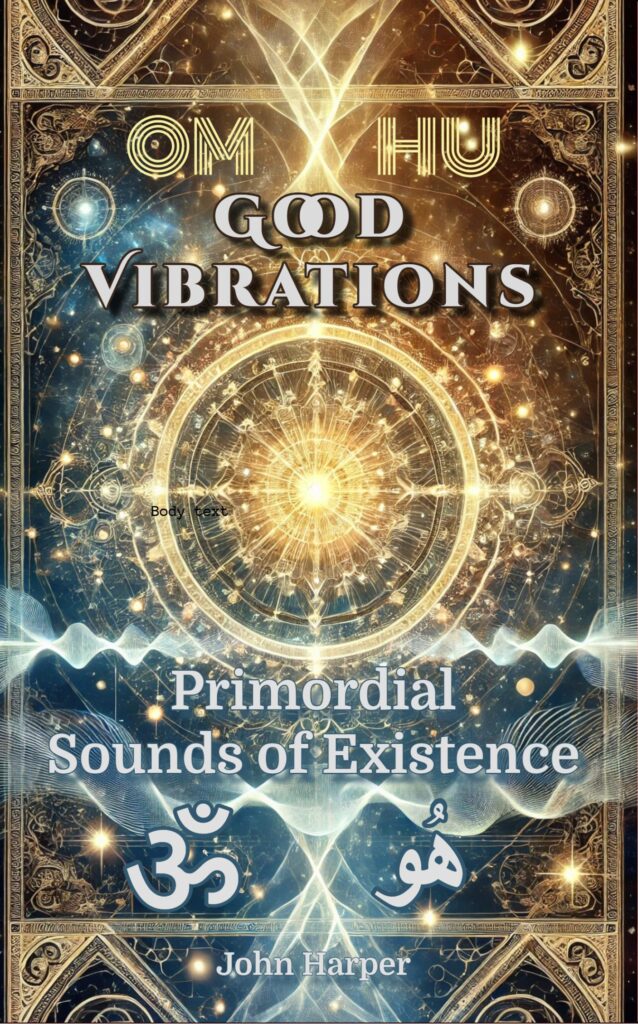Sacred Sound and the Subtle Body
Across spiritual traditions, the syllable OM (or AUM) is revered as the primordial sound—the seed vibration from which all things arise. But beyond its mystical associations lies a subtle physiological reality: when chanted with awareness, OM becomes a carrier wave—resonating through the body, awakening breath rhythms, and even influencing the flow of cerebrospinal fluid (CSF).
This article explores the profound interconnection between chanting, breathing, and entrainment—how the simple act of sounding ‘OM’ can entrain your physiology, awaken your energetic system, and redirect your attention to stillness.
Download Article as PDF
OM or AUM?
You’ve likely seen the sacred Sanskrit symbol ॐ translated as OM—but in traditional phonetics, it is properly pronounced as A-U-M. So which is correct?
In Sanskrit, OM is written as a single syllable: ॐ. Phonetically, it unfolds as three vibrations:
- A (as in “father”)
- U (as in “put”)
- M (as in “mmm”)
Over time, A and U merged into a long O sound in speech. Thus, OM and AUM are the same word, but pronounced differently depending on tradition and emphasis.
Chanting “OM” as a single tone (Ooooooom) is not wrong—but it often centers the vibration in the head and upper chest. Chanting “AUM” consciously brings awareness to the whole body, from the belly to the brain, and into spaciousness.
Spinal Fluid and the Song of the Body
The body is not solid—it’s rhythmic, fluid, and vibrational. At its core, cerebrospinal fluid (CSF) flows, a clear liquid that surrounds the brain and spinal cord, pulsing in tune with your breath and heartbeat. When you inhale:
- The diaphragm descends, and pressure in the abdomen and thorax shifts.
- This subtly pumps CSF up toward the brain.

When you chant OM with diaphragmatic awareness and lift the pelvic floor (a practice known in yoga as mula bandha), you create a hydraulic wave—a gentle upward pressure through the spine. This can: mobilize CSF more efficiently, entrain craniosacral rhythms, and synchronize breath, heartbeat, and brainwave states.
This internal movement is not metaphorical—it is a literal wave action that travels through the spinal column, amplified by sound, breath, and subtle muscular coordination.
AUM as Internal Wave Action
Each syllable of A-U-M unfolds as a wave moving through the body:
- A begins in the belly and pelvic floor, stirring the lower energetic centers.
- U travels through the chest, resonating the heart, lungs, and throat.
- M rises into the skull, activating the cranium and crown.
When chanted with awareness, this wave becomes a single, sonic undulation, rising from base to crown—not just stimulating different regions, but uniting them in a single, cohesive movement of sound and sensation.
This rising wave mirrors the movement of CSF, coordinates breath with subtle flow, resonates through fascia, bone, and fluid, and aligns the inner experience with the vertical axis of consciousness.
You begin to sense that you are not making the sound—the wave of sound is making you. It carries awareness upward, like a tide lifting the whole spine into stillness.
When the Body Listens to Itself
Entrainment is the principle that rhythmic systems—when placed near each other—begin to synchronize.
- Two heart cells placed near each other will pulse in unison.
- Fireflies flash together.
- Metronomes on a shared surface tick in sync. In the human body, chanting AUM acts like a master metronome. It invites your breath, heart rate, cranial rhythm, and nervous system to fall into harmony. When this happens: the vagus nerve activates, bringing parasympathetic calm, the brain hemispheres synchronize, and the sense of separation dissolves—not just mentally, but physiologically. You’re no longer a “doer” chanting OM. You’re being chanted—by the cosmos, by Being itself.
OM as a Map of Consciousness
Traditionally, the syllables A-U-M are said to represent the three states of consciousness:
| Sound | State | Resonance | Experience |
| A | Waking | Belly, pelvis | Embodied presence |
| U | Dreaming | Chest, throat | Inner imagery, subtle feeling |
| M | Deep Sleep | Head, skull | Pure being, silence |
The silence after the sound represents the fourth state (Turiya)—the witness beyond waking, dreaming, and sleep.
When chanted with full awareness, AUM becomes a journey inward: from grounded aliveness (A), to heartful integration (U), to luminous spaciousness (M), to the silent source of it all (…). This journey isn’t conceptual—it’s vibrational, visceral, and real.
Breath, Bandha, and the Fluid Channel
To amplify the wave action of AUM chanting:
- Sit with a straight spine, relaxed but alert.
- On inhale: allow thediaphragm to drop and gently engage the pelvic floor (as if lifting the perineum).
- On exhale: let the A begin in the belly, the U rise through the chest, and the M ring in the skull.
- After the sound fades, rest in silence, noticing the internal echo.
Let the sound be the wave, let the spine be the channel, let awareness be the ocean it returns to.
OM, Tum-mo, and the Wim Hof Connection
The breath mechanics involved in OM chanting also appear in other powerful practices:
- Tum-mo (Tummo) breathing (Tibetan inner fire yoga) uses strong breath and pelvic engagement to raise inner heat and move subtle winds through the central channel.
- Wim Hof breathwork (inspired by Tum-mo) uses cyclical hyperventilation and breath holds to build resilience, reduce inflammation, and reset the nervous system.
Your practice of inhaling with pelvic floor lift and diaphragmatic awareness, paired with AUM chanting, becomes a gentle cousin to these more forceful methods. It invites subtle entrainment, not intensity; aliveness through stillness, not effort; resonance over stimulation.
The Breath That Chants You
To chant OM is not to create something new. It’s to remember the vibration that has always been there—pulsing through your bones, blood, and breath. You are not separate from the CSF wave—you are the wave. You are not producing OM—you are being OM. Chanting is an invitation for AUM to envelop you, the sound wrapping around and through you until effort fades. In that embrace, there is a natural, effortless relaxation, a gentle slipping into absorption where the boundaries soften and the sound carries you inward to its source.
When breath, sound, and awareness unify, the sense of “me” dissolves into a spacious presence that has no boundary and no center.
Accessing and the Lattice of Light
This inner wave, stirred by AUM and breath, is not only physiological and vibrational—it is also cosmic.
Both Jacobo Grinberg-Zylberbaum and Walter Russell, though from vastly different traditions, allude to a fundamental energetic field—a matrix, lattice, or universal wavefield—that underlies all perception, all form, all consciousness.
- Grinberg, in his Syntergic Theory, described the “lattice” as the unified field of consciousness—an invisible web of energy-information that becomes structured through attention and perceptual coherence. He taught that specific breath techniques—including diaphragmatic compression combined with pelvic floor engagement—could modulate the brain-body resonance enough to pierce into the lattice and stabilize entry into expanded states.
- Walter Russell, working from a mystical-physics perspective, spoke of a universal light wave—a spiraling field of radiant potential that can be accessed through rhythmic stillness, breath coherence, and inner motionlessness.
In both models, the wave of AUM, when joined with subtle breath control, becomes more than a tool for entrainment—it becomes a tuning key to the generative blueprint of reality itself. To compress downward with the diaphragm while simultaneously lifting the base (pelvic floor) is to sculpt the inner field—to “press into” the background layer of Being. It’s as though sound and breath, together, fold space inward, and the lattice begins to glow—not metaphorically, but experientially.
AUM and the Activation of Kundalini
As breath becomes wave, and wave becomes sound, and sound becomes presence—something ancient begins to stir at the base of the spine. In the yogic tradition, this is known as Kundalini—the coiled potential of consciousness that lies dormant in matter.

When chanting AUM with pelvic floor lift, diaphragmatic compression, and focused awareness on the spine, the body becomes a flute for the rising force.
Each syllable acts as a key: A awakens the base—touching the tail of the serpent; U spirals it upward through the heart; M releases it into the crown, into the field, into silence.
This is not forcing Kundalini to rise. It is inviting her—through rhythm, stillness, surrender. The CSF wave, the sound wave, and the Kundalini wave may all be different languages for the same vertical mystery.
Good Vibrations: Primordial Sounds of Existence
Good Vibrations invites you into the living mystery of sacred sound, where ancient mantras meet modern science. Through stories, practices, and fresh insights, it reveals how vibrations like HU and AUM can attune your body, mind, and spirit to the deep harmonics of the cosmos. This is not just theory—it’s a practical, resonant guide for those ready to hear the universe singing through them.
While chanting OM and HU over the last thirty years, I had no knowledge of their origins, meanings, or the specific effects on consciousness. Harper’s book gives a detailed description of their history, practice methods, and the latest research on vibrational effects. From ancient Egypt through major religions and mystical studies, HU and OM are doorways into reality. Not only a work of knowledge, but the book also offers valuable insights into chanting techniques, vibrational effects, and essential breath practices.
A must-read for anyone on the path.
Steve Binder – 40-year Diamond Heart Student
John Harper (Enneatype 8) is a Diamond Approach® teacher, Enneagram guide, and student of human development whose work bridges psychology, spirituality, and deep experiential inquiry. He is the author of The Enneagram World of the Child: Nurturing Resilience and Self-Compassion in Early Life and Good Vibrations: Primordial Sounds of Existence, available on Amazon.


